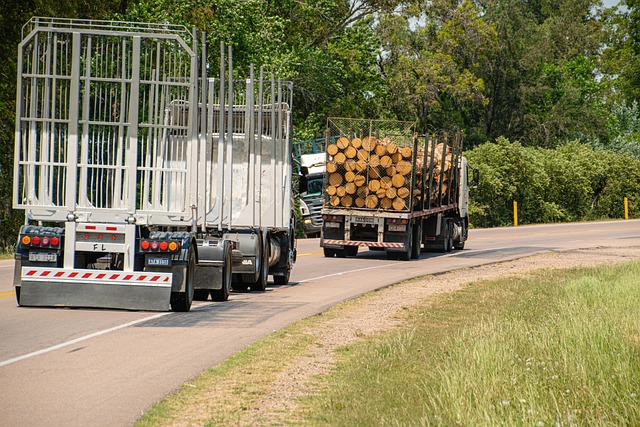Looking to register your car in California? This guide covers the entire process, from understanding eligibility requirements to securing your vehicle’s license plate. We’ll walk you through gathering essential documents, visiting a DMV office or using the online system with a DMV VIN Verifier, completing registration, and maintaining compliance. By following these steps, you’ll be on your way to legal and smooth driving in California.
- Understand Eligibility Requirements for Car Registration in California
- Gather Necessary Documents for Registering Your Vehicle
- Visit a DMV Office or Use the Online System with DMV VIN Verifier
- Complete the Registration Process and Pay Fees
- Obtain Your Vehicle's License Plate and Maintain Registration Compliance
Understand Eligibility Requirements for Car Registration in California

Before you begin the registration process, it’s crucial to understand the eligibility requirements for car registration in California. To register your vehicle, your car must meet certain criteria set by the Department of Motor Vehicles (DMV). One key step is ensuring that your car has undergone a valid vin inspection. This involves using a trusted DMV vin verifier or mobile vin verification service to cross-reference the Vehicle Identification Number (VIN) with the vehicle’s make, model, and year.
Additionally, you’ll need to present essential documents such as proof of ownership, current insurance, and valid identification. The process can often be completed conveniently through a mobile vin verifier, allowing for quicker registration without compromising on accuracy or reliability.
Gather Necessary Documents for Registering Your Vehicle

Before you begin the registration process, ensure you have all the required documents ready. This typically includes your vehicle’s registration certificate from the previous state, a valid driver’s license or ID card, and proof of insurance. It’s also crucial to gather information about your car, such as the make, model, year, and the Vehicle Identification Number (VIN). The DMV recommends using a VIN verifier to ensure you have the correct data.
For a seamless experience, consider utilizing mobile vin verification services that allow you to complete a portion of the process from the comfort of your home. This can save time and effort by eliminating the need for visiting various offices. Remember, having accurate and up-to-date documentation is essential when registering a vehicle in California.
Visit a DMV Office or Use the Online System with DMV VIN Verifier

You have two main options when it comes to registering your car in California: visit a DMV office or use the online system with a DMV VIN Verifier. If you prefer a more traditional approach, heading down to your local DMV is still an option. You’ll need to gather all necessary documents and fees for your vehicle registration. A DMV representative can guide you through the process, ensuring that your car meets all state requirements before approving your registration.
Alternatively, utilizing the online system streamlines the process. Here, a DMV VIN Verifier plays a crucial role by allowing you to verify your vehicle’s identification number (VIN) digitally. This step ensures your car is eligible for registration and helps prevent fraud. By combining these methods—the convenience of an online platform with the necessary VIN inspection—you can register your car in California efficiently and without hassle.
Complete the Registration Process and Pay Fees

Once all required documents are gathered and any necessary inspections completed, such as a mobile vin inspection or vin inspection using a DMV VIN verifier, it’s time to finish the registration process at your California DMV office. You’ll need to fill out an Application for Title and Registration (Form DV-140), providing detailed vehicle information like make, model, year, and current odometer reading. A title fee and registration fee will be charged, which vary based on your vehicle’s type and age. Payment can usually be made with cash, check, or debit card.
After submitting your application and fees, the DMV will issue you a registration certificate and a temporary license plate (if applicable). Make sure to securely affix the plate to your vehicle as required by law. You’ll also receive a notification when your permanent license plate arrives. Keep these documents in your vehicle at all times for proof of registration and insurance.
Obtain Your Vehicle's License Plate and Maintain Registration Compliance

After successfully registering your vehicle with the DMV, it’s crucial to obtain your unique license plate and ensure ongoing registration compliance. The California Department of Motor Vehicles (DMV) provides detailed guidelines for this process. One essential tool is a dmv vin verifier, which allows you to quickly and easily validate your Vehicle Identification Number (VIN). Using a mobile vin verifier or conducting a vin inspection are convenient methods to ensure your plate matches the registered vehicle’s details.
Regularly updating your registration, paying fees on time, and keeping your vehicle in good condition are key to avoiding penalties. Remember, accurate record-keeping with the DMV, including timely renewals, is not just about compliance; it also safeguards your investment and ensures safe, legal operation on California’s roads.
Registering a car in California is a straightforward process, made even easier with the help of a DMV VIN verifier. By understanding the eligibility requirements, gathering the necessary documents, and completing the registration process efficiently, you can ensure your vehicle’s legal status and hit the roads with peace of mind. Remember to keep your registration up to date and comply with all license plate requirements to avoid any penalties.
